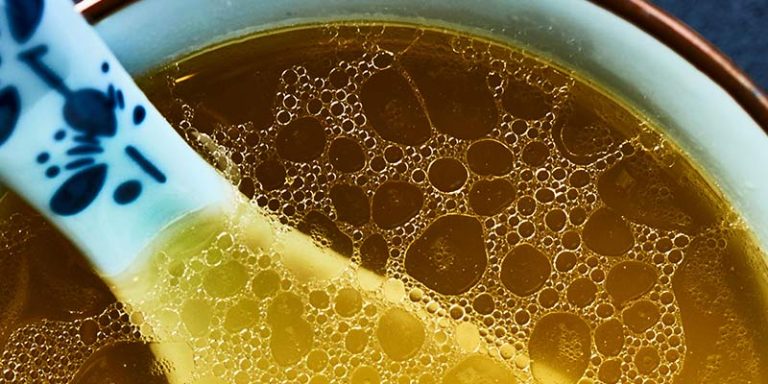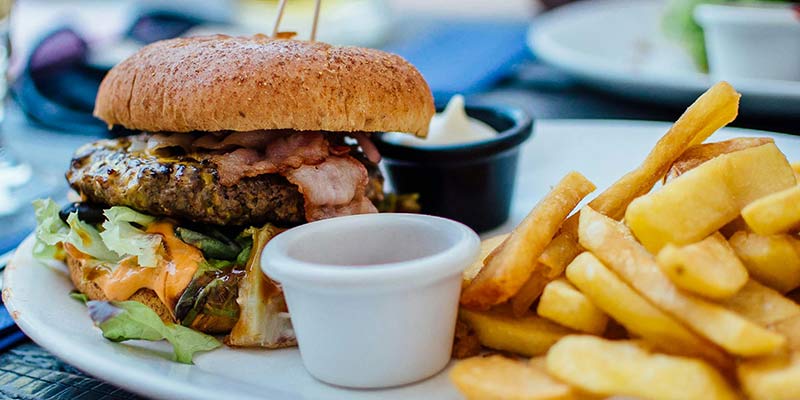A colonoscopy is done to visualize the colon when a person presents with symptoms suggestive of a colorectal tumor, such as abnormal changes in bowel habits (constipation alternating with diarrhea), hematochezia/melena (passage of blood in stool), sudden significant unintentional weight loss, and so on. Other reasons why a colonoscopy may be done include examining and removing polyps (polypectomy), locating and removing foreign objects, screening and surveillance of colorectal cancer, etc.
If you have been scheduled for a colonoscopy, you may be wondering how to prepare for it properly. This article addresses a critical aspect of colonoscopy preparation. So, continue reading.
WHAT IS COLONOSCOPY PREPARATION?
Colonoscopy preparation refers to a series of protocols before a colonoscopy to ensure a successful procedure and an accurate result. A critical aspect of colonoscopy preparation is bowel preparation. Bowel preparation involves dietary changes and medication use. The aim is to induce stool passage and reduce the fecal content in the colon. Two advantages of preparing the bowel for colonoscopy are:
VISIBILITY
A clear and accurate view of the colon is critical to successfully carry out a colonoscopy and achieve the purpose of the procedure. An empty colon helps the medical examiner to accurately identify, locate, and examine lesions.
REDUCED RISK OF INFECTION
Reduced fecal load means reduced bacterial load, which consequently reduces the risk of infection during and after the colonoscopy.
DIETARY MODIFICATIONS IN PREPARATION FOR COLONOSCOPY
As already established, some alterations in diet are required in bowel preparation for colonoscopy. Some of these alterations include intake of a low-residue diet, abstinence from high-residue foods, and, as the colonoscopy date draws near, a clear liquid diet.
WHAT IS THE CLEAR LIQUID DIET?
A clear liquid diet for colonoscopy preparation is a diet that consists mainly of low residue, transparent, liquid – and sometimes semi-solid – foods. When properly curated, a clear liquid diet is nourishing, rejuvenating, and hydrating. It has low residue content and consequently produces reduced fecal matter. It compensates for the laxative effects of bowel preparation by providing water, electrolytes, and nutrients.
PURPOSE OF A CLEAR LIQUID DIET
· HYDRATION
Bowel preparation involves the use of drugs, such as laxatives, and mechanical methods, such as enemas, to induce the passage of stool to cleanse the colon. A downside to these measures is that water is lost in the stool, predisposing it to dehydration. A clear liquid diet helps to replenish lost body water.
· NOURISHMENT
A clear liquid diet provides calories, vitamins, and electrolytes that keep you energized and help you function optimally without solid foods.
· COLON EMPTYING
Different foods have different colon transit times; some are shorter than others. However, it has been found that liquids have a shorter colon transit time than solids. Additionally, the fluid foods incorporated into a clear liquid diet are low-residue foods. This means that they leave little remnants in the colon. These properties help to keep the colon considerably empty while preparing for the colonoscopy.
· EASY ACCESS AND VISIBILITY
During a colonoscopy, a colonoscope (a slim, long, and flexible camera) is inserted into the colon through the anus. It is then gently guided along the colon for visual inspection. A clear liquid diet helps to clear the colon. Consequently, it allows the colonoscope to move through the colon easily and clearly visualize the colon.
· ACCURATE RESULTS
A clear liquid diet reduces fecal bulk in the colon, creating an unobstructed view and accurate assessment of the colon.
A clear liquid diet usually commences one day (24 hours) before a colonoscopy. The most common clear liquid that is taken is water. However, certain other fluid feeds can be taken on a clear liquid diet.
PERMISSIBLE CLEAR LIQUIDS
As restrictive as a clear liquid diet may seem, several clear liquid foods can provide energy and suppress hunger. Examples of permissible clear liquids include:
- Water
- clear broths (chicken, beef, and vegetable)
- fruit juice (without pulp)
- transparent sports drinks
- tea or black coffee (without cream or milk)
- popsicles (without fruit or yogurt)
- gelatin (without fruit)
- carbonated drinks
FOODS TO AVOID
Foods to avoid while on a clear liquid diet in preparation for colonoscopy include foods high in fiber, colored foods, and solid foods.
Although alcohol is a clear liquid, it should not be consumed while on a clear liquid diet, especially in preparation for colonoscopy. This is because alcohol has dehydrating properties, which work against one of the goals of a clear liquid diet – hydration.
Aside from alcohol, some other foods to avoid while on a clear liquid diet include nuts, whole-grain foods, fruits with pulp, vegetables, milk, and dairy products.
IMPORTANCE OF ADHERING TO A CLEAR LIQUID DIET
Colonoscopy is invasive and uncomfortable. Proper preparation for a colonoscopy – including a clear liquid diet – helps to ensure success and minimize discomfort. Some benefits of sticking to a clear liquid diet include:
- Quicker procedure time as less time will be spent trying to maneuver feces.
- Clearer visibility of the colon reduces the possibility of the examiner missing anatomical anomalies in the colon.
- Each colonoscopy result is compared to the last during colorectal cancer treatment and surveillance. Hence, adequate colonoscopy preparation before every colonoscopy session will help provide accurate comparison resultsprovide accurate comparison results.
POTENTIAL CHALLENGES OF CLEAR LIQUID DIET FOR COLONOSCOPY
Starting and, more importantly, adhering to a clear liquid diet in preparation for colonoscopy is difficult. Although the clear liquid diet is temporary, it can be restrictive. This may pose difficulties in maintaining proper nutrition and hydration. However, when armed with adequate information on potential challenges and practical strategies on how to mitigate them, a clear liquid diet becomes easier (and even enjoyable) to stick to.
· LIMITED FOOD OPTIONS
One of the first concerns that comes to mind when considering a clear liquid diet is the significant reduction in available food options. The absence of solid foods and certain liquids can lead to feelings of unsatisfied cravings as well as the monotony of diet.
· NUTRITIONAL DEFICITS
Some clear liquid feeds do not contain all the nutrients required to stay healthy during a clear liquid diet, which can pose a challenge.
· EMOTIONAL CHALLENGES
Food plays a role in our emotional lives, although not in the most obvious ways. While on a clear liquid diet, certain celebratory foods (e.g., cakes, pies, turkey) and comfort foods (e.g., chocolates, ice cream, pastries) will be off-limits. Such restriction of emotional expression through food may lead to feelings of frustration.
· WITHDRAWAL SYMPTOMS
Alcoholics who embark on a clear liquid diet for extended periods may start to experience alcohol withdrawal symptoms. These symptoms are typically distressing and may hinder day-to-day activities.
· FEELING OF INSATIETY
Liquid foods digest faster than solid foods. This means that the feeling of fullness after a liquid meal does not last as long as after a solid meal. Hence, when on a clear liquid diet, it is not unusual to feel hungry more often than usual.
PRACTICAL TIPS FOR OVERCOMING THESE CHALLENGES
The challenges one may face when on a clear liquid diet are not insurmountable. Here are tips to help you adhere to a clear liquid diet in preparation for a successful colonoscopy.
· DISCUSS WITH YOUR DOCTORS BEFORE YOU BEGIN
Discuss comprehensively with your doctor and dietitian before starting a clear liquid diet. Ensure this conversation addresses your needs as an individual and how strict your diet must be. If you are also on any medications, make sure to address whether or not you need to adjust its dosage during the diet.
· PLAN AHEAD
The first step to success is proper planning. Stock up on permissible fluid feeds and learn new recipes. Doing this helps to prevent – or at least, reduce – feelings of monotony, confusion, and feeling overwhelmed before meals.
· INVOLVE YOUR FAMILY AND FRIENDS
The positive impact of a support system when working towards any goal is powerful. A good support system can encourage you and keep you in check on days when you feel frustrated by the diet or you feel like giving up.
· INCREASE NUTRITIONAL INTAKE
Opt for healthier liquid food options. Liquids like chicken, beef, and bone broth are significantly more nutritious than soda.
· AVOID TEMPTATIONS
Stock your refrigerator with clear liquids and hide solid foods for the duration of the diet. If possible, avoid social gatherings that may force you to break your diet.
OTHER MEDICAL PROCEDURES THAT MAY REQUIRE A CLEAR LIQUID DIET
A clear liquid diet is typically required for medical procedures that involve the gastrointestinal tract. Aside from a colonoscopy, here are some medical procedures that require a clear liquid diet.
- Diagnostic or therapeutic gastroscopy
- Barium enema
- Surgeries involving the gastrointestinal tract
- Robotic Radical Cystectomy
- Robotic Radical Prostatectomy
- Splenectomy
CONCLUSION
A clear liquid diet is a vital part of preparing for a colonoscopy. It ensures your doctor has the clearest possible view of your colon while also keeping you hydrated and nourished in the days leading to the test. Water, clear broth, sports drinks, and gelatin are some of the liquids allowed in this diet.
Although sticking to the diet till the end is no easy feat, it ensures the procedure is successful. Remember to ask your healthcare provider any questions you may have before and during a clear liquid diet in preparation for a colonoscopy.





